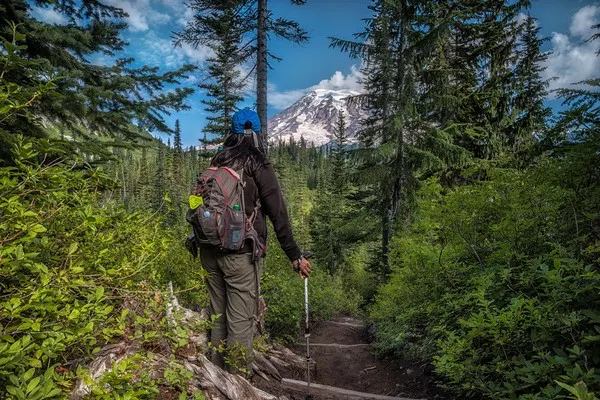Trekking is a timeless adventure that beckons outdoor enthusiasts to explore nature’s beauty and challenge themselves along the way. From leisurely walks through scenic landscapes to high-altitude expeditions that test physical endurance, trekking offers a spectrum of experiences. Each type of trekking is unique, catering to different skill levels, interests, and preferences of trekkers. Understanding the various types of trekking can help adventurers plan their next outdoor excursion with precision and excitement.
1. Day Hiking
Day hiking is perhaps the most accessible form of trekking, ideal for beginners and seasoned hikers alike. It involves walking on well-marked trails for a few hours and returning to the starting point on the same day. Day hikes often showcase picturesque scenery, from coastal trails to forest paths and mountain viewpoints. This type of trekking requires minimal equipment—a comfortable backpack, sturdy footwear, water, snacks, and appropriate clothing.
Day hiking is perfect for those seeking a brief escape into nature without the commitment of overnight stays. Popular day hikes can range from easy strolls suitable for families to more challenging routes for experienced hikers looking to squeeze in a quick adventure.
2. Backpacking
For those craving a more immersive experience, backpacking offers the freedom of multi-day trekking expeditions. Backpacking involves carrying all necessary gear, including food and shelter, in a backpack and trekking over several days, often camping overnight along the trail. This type of trekking requires more planning and endurance than day hiking but rewards participants with deeper connections to nature and remote landscapes.
Backpacking routes can vary greatly in difficulty and terrain, from gentle trails in national parks to rugged backcountry adventures in mountainous regions. Backpackers must be prepared with essential survival skills, such as navigation, campsite selection, and backcountry safety.
3. Mountaineering
Mountaineering transcends standard trekking, involving technical skills and equipment for ascending steep or icy terrain. Mountaineering expeditions often target specific peaks or summits, requiring specialized training in rock climbing, ice climbing, and glacier travel. This type of trekking demands a higher level of physical fitness and technical expertise, including the use of ropes, harnesses, crampons, and ice axes.
Mountaineering is reserved for experienced trekkers seeking the ultimate challenge of scaling formidable peaks and conquering high-altitude environments. Expeditions can last several days or weeks, with trekkers navigating challenging conditions and extreme weather.
4. Wilderness Trekking
Wilderness trekking ventures into remote and less-traveled areas, offering trekkers a chance to explore pristine landscapes far from civilization. This type of trekking often involves off-trail navigation, as routes may not be clearly marked. Wilderness treks require self-sufficiency and advanced outdoor skills, including map reading, orienteering, and wilderness survival.
Wilderness trekking appeals to adventurers seeking solitude and untouched wilderness. Participants must be prepared for rugged terrain, unpredictable weather, and encounters with wildlife. Safety and environmental responsibility are paramount in wilderness areas, where trekkers leave no trace of their presence.
5. Long-Distance Trekking
Long-distance trekking encompasses epic journeys spanning hundreds or even thousands of kilometers. Popular long-distance trails like the Appalachian Trail or Camino de Santiago attract trekkers from around the world seeking transformative experiences. This type of trekking demands physical endurance and mental resilience, as participants trek for weeks or months, often through diverse landscapes and cultural regions.
Long-distance treks require meticulous planning, including resupply strategies, route navigation, and consideration of seasonal weather patterns. Trekkers embark on these journeys to challenge themselves, discover new perspectives, and forge lasting connections with fellow hikers.
6. Cultural Trekking
Cultural trekking combines outdoor adventure with immersion in local cultures and traditions. This type of trekking often follows ancient trade routes or pilgrimage trails, allowing trekkers to interact with indigenous communities and experience authentic cultural exchanges. Cultural treks may include homestays, visits to historical sites, and participation in local festivals.
Cultural trekking offers a deeper understanding of regional customs, folklore, and lifestyles. Trekkers engage with local communities, learning from their traditions and contributing to sustainable tourism initiatives. This enriching experience fosters mutual respect and appreciation for diverse cultures.
Conclusion
Trekking encompasses a rich tapestry of experiences, from leisurely day hikes to ambitious mountaineering expeditions and soul-stirring long-distance journeys. Each type of trekking caters to different interests, skill levels, and aspirations, providing outdoor enthusiasts with countless opportunities to explore nature’s wonders. Whether trekking through dense forests, ascending towering peaks, or immersing in cultural landscapes, adventurers embark on transformative journeys that deepen their connection with the natural world and leave lasting memories of exploration and discovery.

